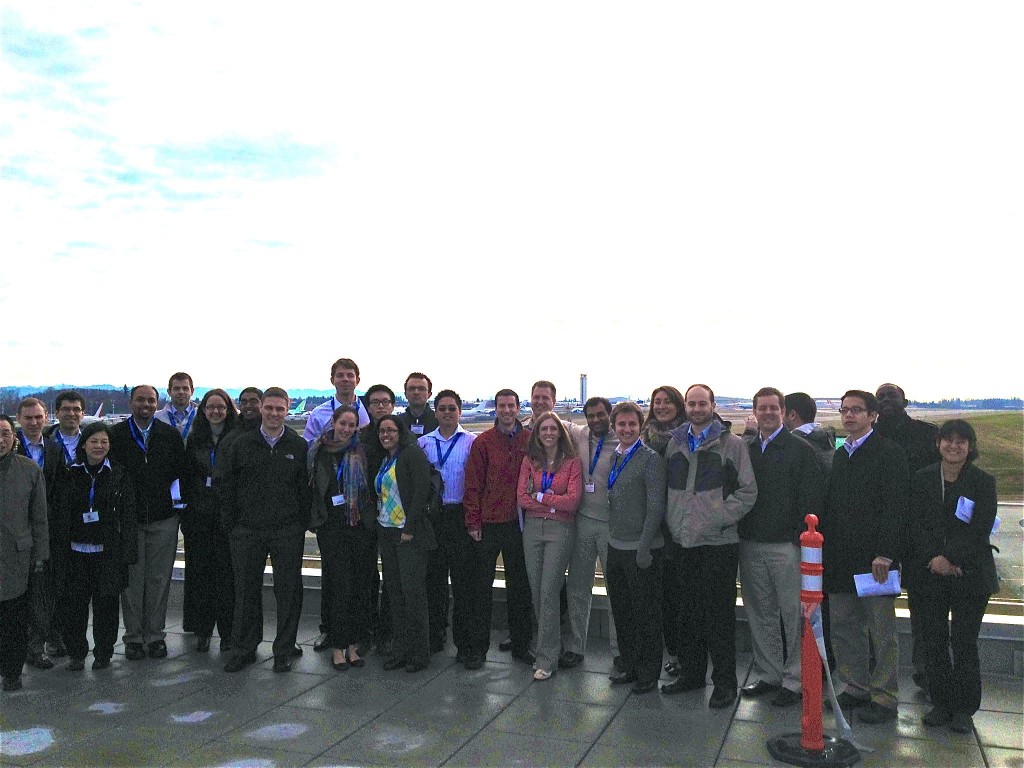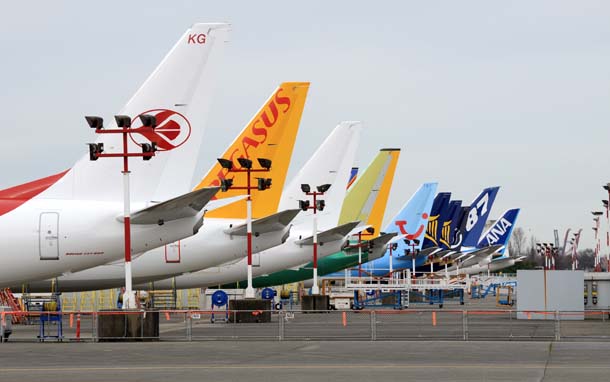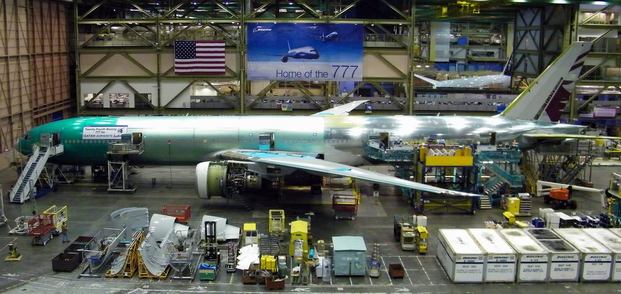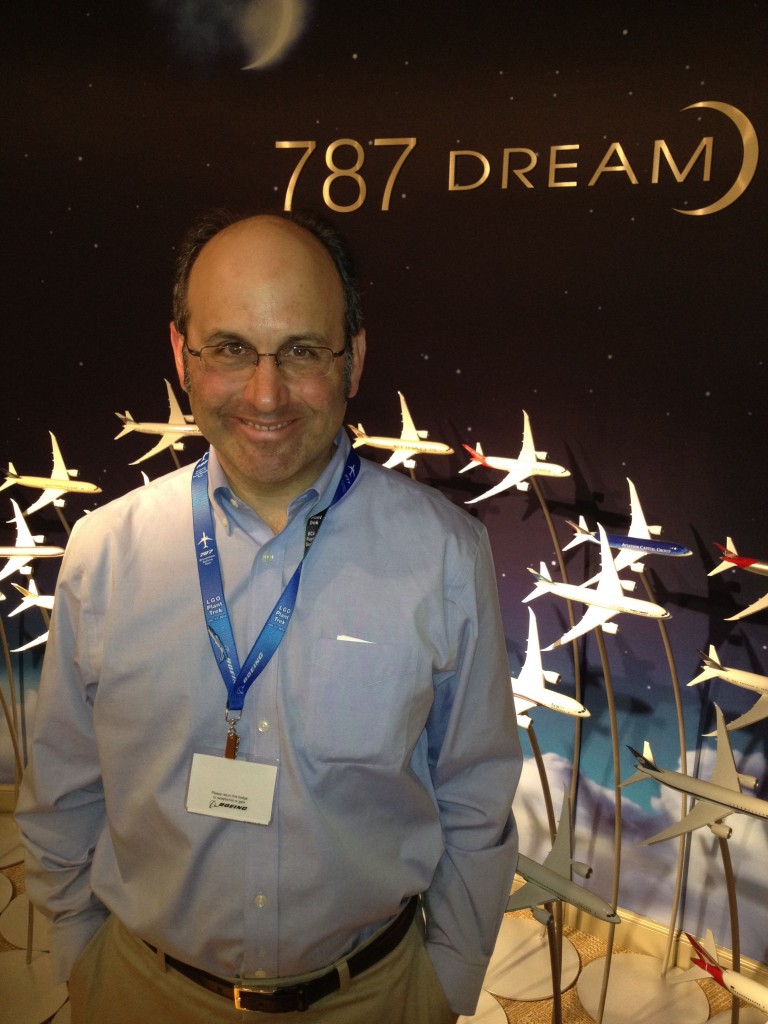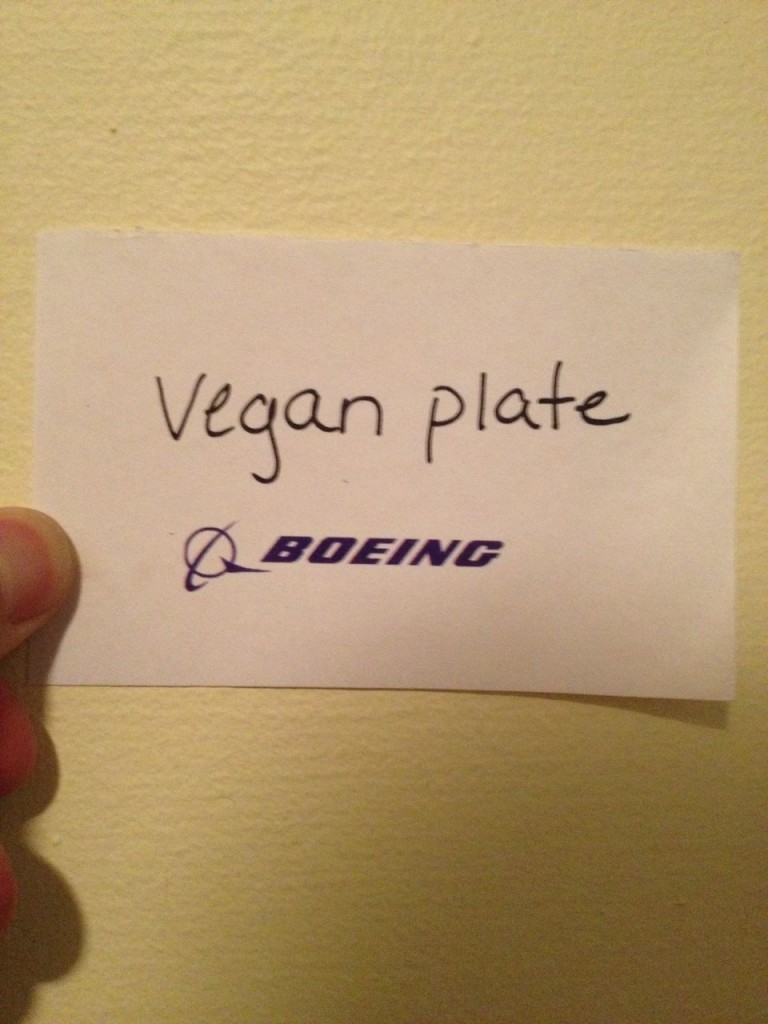My all too short but intense journey with the MIT LGO class of 2013 on part of their two-week tour across the country to our program’s partner company factories came to a close on Friday in Seattle. We had a visit to two big Boeing sites: Boeing Field in Seattle, where we saw the 737 paint shop and customer delivery center, and the big-place factory in Everett along with the fancy 787 Dreamliner Gallery where customers pick interiors. Boeing has a huge backlog of orders–thousands for the 737–and is working hard to figure out how to increase their rate of production.
We started our day with a briefing by Boeing’s customer delivery leaders and split up to tour the different facilities. In the paint shop, we saw what might be the largest-scale arts and crafts project going: each 737 has its wings taped up with brown paper, which is not reusable but at least is recycled, while workers on scissor lifts or even suspended by harnesses apply the paint over a three-day cycle (four if you want a sponge paint look). While many airlines are shifting to mostly white paint schemes, because of cost and reduced paint weight, some like Southwest still find bright colors an important part of their brand. For Southwest, they paint the whole plane yellow, then the whole plane red, then the whole plane blue. What we saw in process was a Lion Air plane, which has a lion insignia in red on a white background. They have recently introduced stencil decals that stick onto the plane, reducing the need for hand taping–though they do still tape by hand for racing stripes. The paint shop workers are among the most desired in the company and from several perspectives it seems that Boeing has made it one of the top such operations in the world. It is a remarkably clean shop and demonstrated good collaboration of management and labor, for example in a recycling initiative that a worker suggested and Boeing implemented with great cost savings and positive environmental impact. But the skilled workforce is quite old on average and the company has a challenge ahead of it to transition to younger workers.
On the 737 delivery field, we saw all 17 stalls taken with planes ready for inspection and approval by customers. Their insignia show that most of the planes are going to developing-world markets. We got to walk around another Lion Air 737 and stick our heads into engines and wheel wells. One of our overeducated wiseacres asked if the noise baffle shielding around the engine might be called the “shroud of turbine.” We saw the Lion Air team walking the plane and putting red masking tape to indicate problem areas, reminding me of that anxious moment when you turn in your rental car after maybe incurring a few dings. All in all it was an amazing experience to see the planes bound for countries all over the world, and get a glimpse at the mundane reality of how customers kick the tires.
We rode out to Everett and had a great lunch discussion with Boeing execs, many of whom are LGO alumni (there are more alumni in Boeing than in any other company). Then we got a tour of the main factory there, the biggest building under one roof in the world, where the 747-8, 777, and 787 are built. It was a great learning experience to see how Boeing has refined their manufacturing approach for the 787, which has a super complex global network of companies building completed sections of the plane that are then joined together at this site and in Charleston, SC. The 777 line is much more mature, with the thousandth plane currently in process, and the line actually moves. The similarities and contrasts to the auto plants we saw in Michigan offered just the sort of big-picture manufacturing context that this tour is meant to provide to the students.
Boeing staff then made a presentation to the students about the internship projects being offered this year, and then we toured the Dreamliner Gallery, which has simulated interiors and showrooms full of the various standard selections for coffee pots, bathroom fixtures, seats and fabrics, and everything else you need to trick out your new 787. It was a reminder of how the sales process goes hand in hand with the engineering and manufacturing processes: if you want to design your own custom seat or pick a fabric that matches the Rosebud sleigh of your childhood, it has a big impact on the time it takes to order and get these non-standard items ready to install. The genial sales engineer staff said their lives and their customers’ experiences were much more streamlined with this new system, and it is certainly an inviting space in which to imagine your beautiful future. The Boeing LGO alums gave us some parting “flair” for our lanyards (cool aircraft pins) and we were done for the week–but not before another debrief session, which looked back at the faculty’s previous visits to Boeing and ahead to how what we learned and observed could help Boeing keep getting better.
All in all it was a terrific few days for me, and gives me a much more concrete sense not only of what manufacturing is about but of how special the LGO students are in their passion for thinking through the challenges of making jets, shipping millions of packages or how you do both of these massive undertakings.

